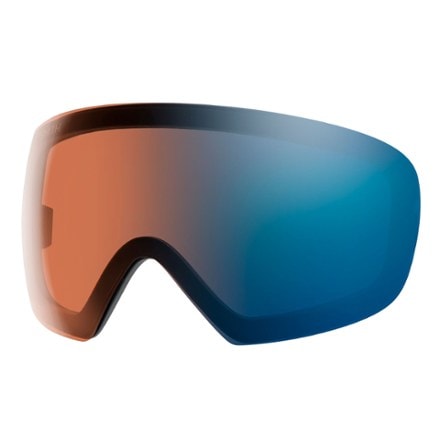Skip to search results
loaded 121 results
Smith Skiing
(121 products)Products (121)
Filter
- Ski Goggles (71)
- Women's Ski Goggles (55)
- Men's Ski Goggles (48)
- Ski Helmets (50)
- Snow (48)
- L Round Contour (5)
- XS (5)
- Small (38)
- Medium (25)
- Large (24)
- XL (9)
- M Round Contour (5)
- One Size (1)
- S Round Contour (6)
- $0.00 to $9.99 (2)
- $10.00 to $19.99 (1)
- $20.00 to $49.99 (6)
- $50.00 to $99.99 (21)
- $100.00 to $199.99 (54)
- $200.00 to $499.99 (43)
- Made in USA (55)
- Interchangeable Lenses (50)
- Rotational Impact Protection (45)
- Eyewear Compatible (24)
- Top Rated (17)
- Photochromic (16)
- New Arrivals (12)
- Award Winner (3)
- Volume Control (2)
- Wireless (1)
- 0 to 0.49 (2)
- 0.5 to 0.99 (24)
- 1 to 1.49 (22)
- 1.50 to 2.99 (2)
- Spherical (39)
- Cylindrical (24)
- Standard Bridge Fit (49)
- Low Bridge Fit (14)
- Deals (44)
- Snowsports (121)
Sort: Best Match
View:
- SmithI/O MAG S ChromaPop Photochromic Rose Flash Replacement Lens - Women's$155.00(0)0 reviews
121–121 of 121 products
Sort: Best Match
Related Expert Advice articles
Understand lens shapes
- Cylindrical lenses curve horizontally but are flat vertically. They're more affordable but may cause more glare and slightly limit peripheral vision.
- Spherical lenses curve both horizontally and vertically, offering better peripheral vision, less distortion and less glare. They cost more than cylindrical lenses.
- Toric lenses also curve in both directions, but with a subtler vertical curve. They offer improved optical clarity and reduced distortion—at a higher price point.
Lens tint and visible light transmission (VLT)
VLT refers to the percentage of light that passes through the lens and reaches your eyes.
- Bright sunny conditions: Look for a low light transmission (less than 25%).
- Partly cloudy conditions: Aim for light transmission between 25%-50%.
- Overcast, stormy or low-light conditions: Look for 50% or higher light transmission.
- Night riding: Use clear goggles or lenses with 80%-100% light transmission
Other features to consider:
- Many higher-end goggles come with two lenses—one for low light and one for bright conditions
- Interchangeable lenses let you swap lenses easily.
- Photochromic lenses automatically lighten or darken depending changing light though there is a lag time.
Read full article: How to Choose Goggles for Skiing and Snowboarding
Learn about ski/snowboarding helmets and how to choose the right one for you. Our article covers components, construction, fit and features.
